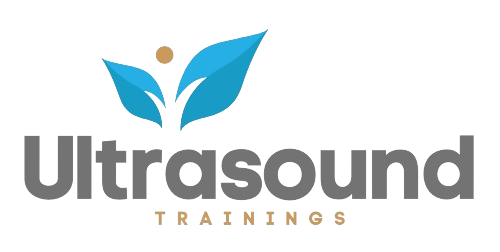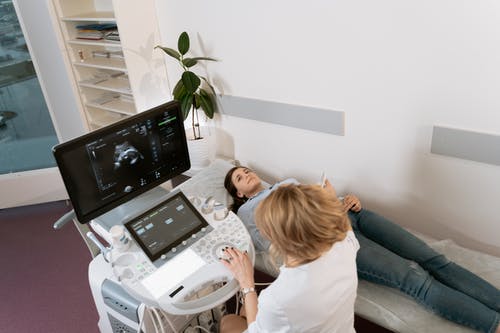Ultrasound technology has long been a cornerstone of medical diagnostics, offering a non-invasive, real-time view of the inside of the body. It has revolutionized the way healthcare professionals assess and treat patients, especially in specialties like obstetrics, cardiology, and emergency medicine. But as technology continues to advance, ultrasound is evolving in ways that make it even more powerful, accessible, and versatile.
In this blog post, we’ll explore the future of ultrasound technology, focusing on emerging trends and innovations that healthcare professionals should be aware of to stay ahead of the curve. Whether you’re a nurse practitioner, physician assistant, midwife, or doctor, understanding these advancements will help you provide better care, improve patient outcomes, and enhance your professional skills.
1. Portable and Handheld Ultrasound Devices
One of the most significant shifts in ultrasound technology is the movement toward portable and handheld devices. Traditionally, ultrasound machines have been bulky, requiring dedicated rooms and specialized equipment. However, recent innovations are making ultrasound more accessible and convenient for healthcare professionals working in a variety of settings.
Why It Matters:
- Increased Accessibility: Portable ultrasound devices make it easier for clinicians to perform on-the-spot imaging, particularly in remote or underserved areas, emergency rooms, or at the patient’s bedside.
- Cost-Effective: Handheld devices are often more affordable than traditional machines, which can reduce the cost of care, especially in practices or smaller clinics that may have limited budgets.
- Faster Decision Making: With portable ultrasounds, healthcare professionals can make immediate decisions based on real-time imaging. This is particularly important in fast-paced environments like emergency medicine or urgent care.
What You Should Learn: Healthcare professionals should become familiar with how portable ultrasound devices work, as they may become a key part of routine care in a variety of settings. Learning to use these devices effectively can help you make timely decisions and improve patient outcomes.
2. Artificial Intelligence (AI) and Machine Learning Integration
Artificial intelligence (AI) is making its way into ultrasound technology, transforming the way images are interpreted. AI algorithms can analyze ultrasound images more quickly and accurately than humans, providing automated measurements, highlighting areas of concern, and even offering predictive analysis of potential conditions.
Why It Matters:
- Faster Diagnosis: AI can assist in quickly interpreting ultrasound images, saving time and helping healthcare professionals make more informed decisions without having to manually analyze each image in detail.
- Improved Accuracy: Machine learning algorithms have the potential to reduce human error by providing more consistent and accurate assessments of images, particularly in complex or challenging cases.
- Advanced Predictive Tools: AI tools can also predict potential issues before they become clinically apparent, allowing for early intervention and better prevention strategies.
What You Should Learn: Understanding how AI can augment ultrasound interpretation is becoming increasingly important for healthcare professionals. Familiarize yourself with the AI tools available in ultrasound machines and consider how they can support your diagnostic capabilities. Being comfortable with AI integration will enhance your efficiency and accuracy.
3. 3D and 4D Ultrasound Imaging
While 2D ultrasound has been the standard for many years, the use of 3D and 4D imaging is gaining traction, particularly in obstetrics, cardiology, and musculoskeletal imaging. 3D ultrasound provides three-dimensional views of organs and tissues, allowing healthcare professionals to see detailed structures and improve diagnostic accuracy. 4D ultrasound, which adds motion to 3D imaging, offers real-time visualization.
Why It Matters:
- Enhanced Visualization: 3D and 4D imaging provide a clearer and more comprehensive view of the body’s internal structures, improving diagnostic capabilities, particularly in obstetrics (e.g., assessing fetal development) and cardiology (e.g., evaluating heart function).
- Improved Patient Experience: 4D ultrasound allows expectant parents to see their baby in real time, enhancing their connection to the pregnancy and offering a more personalized experience.
- Better Treatment Planning: 3D imaging can be used for surgical planning, allowing for more precise intervention, especially in complex cases like tumor mapping or organ assessments.
What You Should Learn: As 3D and 4D imaging become more common, healthcare professionals should familiarize themselves with the technology and learn how to interpret 3D/4D images. Understanding the nuances of these advanced imaging techniques will improve the accuracy and comprehensiveness of your diagnoses.
4. Elastography: Assessing Tissue Stiffness and Hardness
Elastography is a cutting-edge ultrasound technique that measures the stiffness of tissues, which can be critical for detecting conditions like liver fibrosis, cancer, and cardiovascular disease. This technique can be used to evaluate soft tissues in a way that traditional ultrasound cannot.
Why It Matters:
- Non-Invasive Diagnostic Tool: Elastography provides an important non-invasive alternative to biopsies, making it a valuable tool for assessing tissue abnormalities and monitoring disease progression.
- Early Disease Detection: It can help detect early-stage diseases, particularly liver disease or cancer, by identifying subtle changes in tissue stiffness before visible abnormalities appear.
- Enhanced Risk Stratification: Elastography allows healthcare providers to better understand the severity of certain conditions, leading to more informed treatment decisions.
What You Should Learn: Healthcare professionals should gain familiarity with elastography techniques and learn how to interpret elastography results. With its growing use in liver and cancer diagnostics, mastering elastography could be a valuable skill in many clinical settings.
5. Virtual and Augmented Reality for Training and Education
Virtual reality (VR) and augmented reality (AR) are becoming useful tools for training healthcare professionals in ultrasound techniques. These technologies can simulate real-life ultrasound scenarios, allowing students and professionals to practice without needing live patients.
Why It Matters:
- Immersive Learning: VR and AR create a simulated environment where learners can practice ultrasound imaging in a controlled, risk-free setting. This allows them to refine their skills before performing procedures on actual patients.
- Hands-On Training: These technologies offer a more interactive and engaging training experience, especially for complex procedures or rare conditions.
- Global Access to Training: VR and AR technologies can make ultrasound training more accessible to healthcare providers worldwide, particularly in remote areas with limited access to traditional training facilities.
What You Should Learn: As VR and AR technologies gain traction in medical education, it’s important for healthcare professionals to stay up-to-date with these tools. Embrace these technologies for your own continuous education and consider how they can enhance your practice.
6. Integration with Other Imaging Modalities
As healthcare providers aim to provide more comprehensive care, ultrasound is increasingly being integrated with other imaging modalities, such as CT scans, MRIs, and even X-rays. This integration allows for a more holistic view of a patient’s condition and can lead to more accurate and timely diagnoses.
Why It Matters:
- Comprehensive Diagnostics: Combining ultrasound with other imaging technologies allows for a deeper understanding of complex cases, such as cancers, vascular diseases, and musculoskeletal injuries.
- Streamlined Workflow: Integrated imaging systems make it easier for healthcare professionals to access and analyze a variety of images from different modalities in a single, unified system.
- Improved Patient Care: By combining ultrasound with other imaging modalities, clinicians can make more informed decisions, leading to better treatment plans and improved patient outcomes.
What You Should Learn: As ultrasound becomes more integrated with other imaging technologies, healthcare professionals should stay informed about new systems and learn how to effectively use these integrated tools. Being proficient in multi-modality imaging will make you more effective in your clinical practice.
Conclusion: Staying Ahead of the Curve
The future of ultrasound technology holds exciting possibilities, from portable devices and AI-enhanced imaging to 3D/4D visualization and elastography. For healthcare professionals—whether you’re a midwife, nurse practitioner, physician assistant, or doctor—staying ahead of these trends is essential to providing the highest level of patient care and maintaining a competitive edge in the field.
To remain at the forefront of ultrasound advancements, healthcare providers should continue learning, embrace new technologies, and incorporate these innovations into their daily practice. By staying informed and adapting to these emerging trends, you’ll be well-equipped to offer the best diagnostic solutions and improve patient outcomes in an increasingly technology-driven healthcare environment.
At Ultrasound Trainings, we’re committed to offering the latest ultrasound training to help healthcare professionals stay ahead of the curve. If you’re interested in advancing your skills and learning about the newest ultrasound technologies, contact us today to explore our training program.


